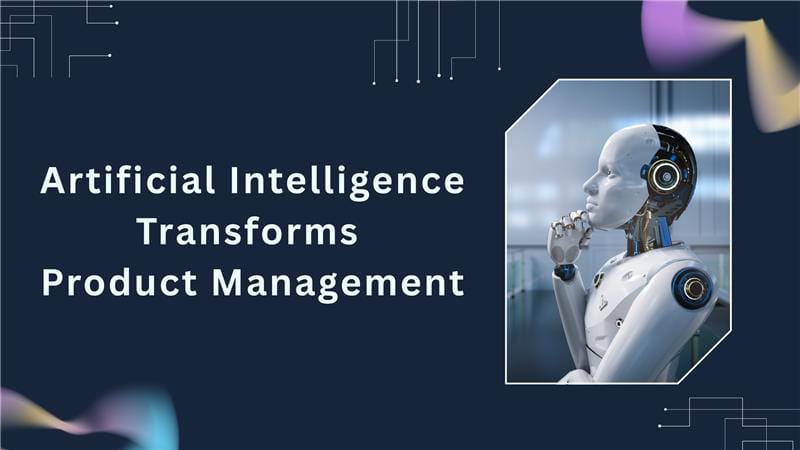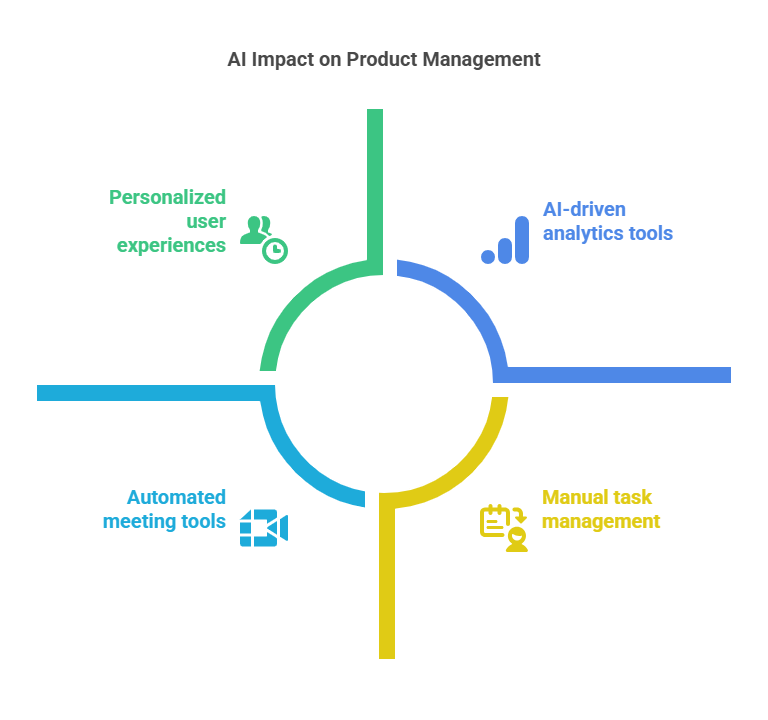AI in Product Management: Evolution, Impact, and the Future
AI is transforming modern product workflows

As of 2024, over 50% of product teams globally are already leveraging AI tools in some form, whether for data analytics, sprint planning, backlog grooming, or user personalization (Gartner, 2024). This adoption is accelerating rapidly, with McKinsey reporting that companies using AI in product development have seen a 20–40% increase in time-to-market speed and a 15–25% improvement in user satisfaction.
Just as the advent of computers revolutionized industries in the 1980s and 1990s, automating workflows, improving accuracy, and amplifying human potential, AI is now driving a similar transformation in how we ideate, build, and scale digital products.
This blog explores how AI is evolving the field of product management, what lessons we can draw from the past (especially from the computerization era), and how product teams can prepare for the future. This guide offers a grounded yet forward-looking perspective.
Product Management
Rather than define product management with textbook terminology, let’s talk about what it feels like in practice.
Product Management is less a role and more a function of orchestration. It touches multiple disciplines, acting as the glue between strategy, execution, design, and user feedback. A great Product Management:
- Sets the product vision and roadmap
- Breaks down requirements and priorities
- Drives execution with project management acumen
- Champions user experience
- Facilitates cross-functional collaboration
A successful Product Manager maintains a thoughtful balance between defining the “what” (requirements) and enabling the “how” (execution), while aligning short-term objectives with long-term strategic value. As effective PMs along with keeping the pace, also they lead the way with agility and clarity.
When Product Management Becomes Essential
Product management truly shines in complex, fast-changing environments. Its value grows when:
- The rate of change is rapid:
Markets shift. Technology evolves. Customer expectations grow. PMs are key to helping teams pivot quickly and with purpose. - Ambiguity is high:
In situations where outcomes are fuzzy or undefined, PMs bring clarity and structure, translating vague aspirations into actionable plans.
However, PMs may not always be a high-leverage investment. For example:
- When perfection isn’t required:
Internal tools or low-stakes projects might not justify the overhead of detailed product processes. - When the organization doesn't support the function:
In companies where leadership underestimates or misunderstands product management, PMs often lack the influence needed to be effective.
The Role of Artificial Intelligence
AI is not the first transformative technology that has made people nervous or excited. It’s following a similar trajectory to that of computers decades ago.
A senior leader from one of India’s largest public sector banks once reflected on how employees feared computers in the 1980s. They thought computers would eliminate jobs. Instead, computers changed how people worked. They enhanced productivity, reduced manual errors, and redefined entire workflows.
AI is on the same path, but faster.
According to McKinsey’s 2024 State of AI report, 71% of organizations already use generative AI in at least one business function, up from just 55% a year earlier.
Much like early computerization, AI is now:
- Reducing repetitive work
- Improving accuracy
- Increasing speed to market
- Democratizing access to complex analysis
Those who embrace AI today will be tomorrow’s high performers. Those who hesitate may find themselves left behind, not because they were wrong to be cautious, but because they failed to adapt fast enough.
AI Lessons from the Computer Era:
Let’s draw some parallels between computerization and today’s AI wave:
1. Skepticism vs. Enthusiasm
Early computers were unreliable and hard to use. Many people found pen and paper more comfortable. Similarly, AI has its share of skeptics, concerned about hallucinations, bias, and over-reliance. But just like early software matured, AI will too.
2. Early Adopters Win
In the past, early computer adopters saw gains in speed, efficiency, and market advantage. Today, AI early adopters are already reporting productivity boosts of 30–40%, especially in areas like product planning, writing specs, and sprint planning.
3. Job Evolution, Not Elimination
Jobs didn’t vanish with computers they evolved. Data entry clerks became database administrators. Typists became content managers. AI is doing the same. The value will shift toward how well you can apply AI, not whether you built it.
4. Amplification of Human Capabilities
Computers helped humans do more. AI helps us think better, faster, and more deeply. It amplifies decision-making, pattern recognition, and user insight, three areas at the heart of product management.
AI’s Real-Time Impact on Product Management

Let’s get tactical. Here’s how AI is already reshaping product management today:
1. Data-Driven Decision Making
AI can sift through customer feedback, NPS scores, usage analytics, and market data to highlight patterns human PMs might miss. This helps prioritize features based on actual impact.
PMs using AI-driven analytics tools report up to 25% more accurate roadmap prioritization (Source: Productboard Study).
2. Enhanced User Experience
With AI-powered personalization engines, products can now tailor content, recommendations, and flows in real time—significantly increasing engagement and retention.
A/B testing platforms powered by AI have shown 12–18% lifts in conversion rates, simply by optimizing user journeys (Source: Optimizely).
3. Automation of Mundane Tasks
AI can draft user stories, summarize sprint retros, generate release notes, and even help groom backlogs.
Tools like Jira Assistant, ClickUp AI, and Notion AI are becoming go-to companions for modern PMs.
4. Cross-Functional Alignment
AI assistants can now transcribe meetings, tag action items, and create follow-up tasks automatically, removing ambiguity and ensuring everyone’s on the same page.
PMs report saving 4–6 hours per week on alignment tasks when using AI meeting tools like Fireflies.ai or Otter.
Tools Leading the Way
Here are a few AI tools that product teams should explore:
- ChatGPT & Gemini – For ideation, competitor analysis, summarizing documents
- Notion AI – For documentation, brainstorming, backlog grooming
- Jira Assist – For issue tracking and user story generation
- Fireflies / Otter.ai – For meeting notes and action item tracking
- Amplitude & Mixpanel AI – For behavioral analytics and insight generation
The Future of AI-Enhanced Product Management
We’re just getting started. The next wave will likely include:
- Autonomous Backlog Management: AI tools that not only suggest but actively reprioritize tasks based on user signals.
- Smart Prototyping: Instant generation of design mockups based on user stories.
- Voice-Led PM Interfaces: Natural language interfaces to manage Jira boards or roadmap tools.
- Ethical AI Frameworks for PMs: As AI becomes more integral, PMs will be tasked with ensuring responsible and ethical AI deployments.
Final Thoughts
AI is not here to replace product managers. It’s here to supercharge them.
Much like computers in the '80s and the internet in the '90s, AI is the technology of this decade. Product managers who embrace it, experimenting with tools, integrating insights, and focusing on user-centric applications, will lead the next generation of product success.
The future isn’t coming. It’s already here.
The only question is: Are you ready to build with it—or be built out of it?
